Everything I Know About Scallop Diving
Which on the whole, isn't much, but it will explain why I repeatedly get in the sea in the depths of Scottish winter to hunt for a small mouthful of protein.
Following last week’s post on amateur butchery, and the ever so lovely wave of support which proceeded, I’d like to talk about foraging for shellfish. I’ll be doing this over the course of several newsletters, woven between documenting what I’m doing with all that venison in the freezer, plus a few other projects here and there. There is much delicious content to go at; I won’t offer a schedule but rest-assured there will be freshly shucked words in your inbox on a more regular basis.
Part one - namely, the very email you’re reading - focuses on diving for scallops, which I think are the best thing to come out of the sea next to the Nephrops family, and have always been up there in my top five items to put in my mouthhole. Their sweet, delicate flesh, seared in butter to elicit that golden maillard reaction, is more than worth the faff of diving for them.
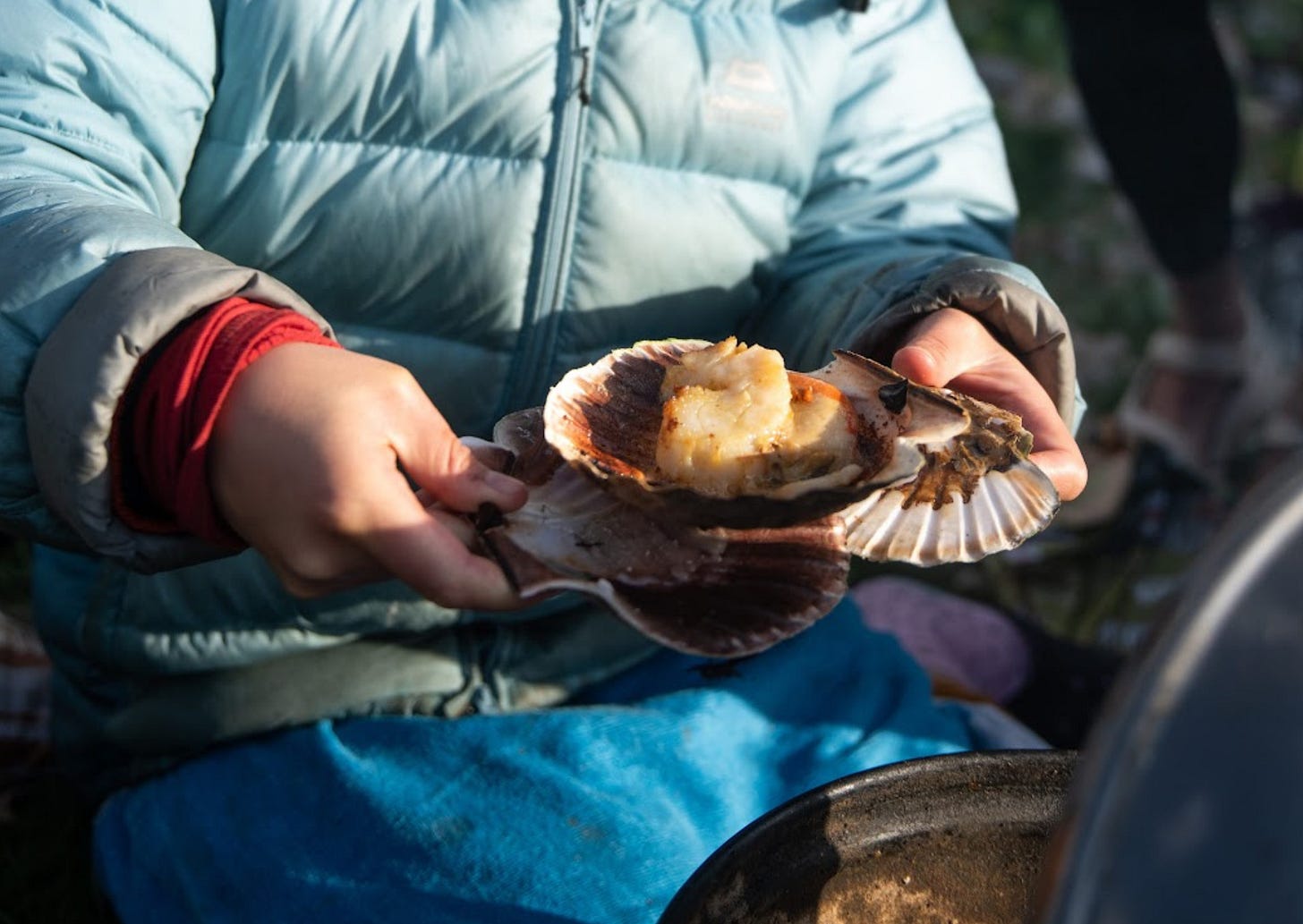
(My other favourite foods, while we’re here, are a bakedly freshed baguette with salted French butter; heavy, sticky figs straight from the tree; cold-smoked wild salmon; and this exact selection box of chocolates I once won in a Fortnum’s hamper.)
And, while we’re here in this introduction, allow me to perform some arse-covering. The sea is like a rescue dog whose temperament is entirely unpredictable: it might want a cuddle one moment, then try to rip your face off the next. Treat it with the cautious respect it commands. Also, I am absolutely not an expert on scallop diving, or indeed, any sort of diving at all. Professional scallop divers use air tanks and expensive kit: I use a winter surf wetsuit, my limited lung capacity, and everything else comes out of Decathlon. My word is about as opposite to Gospel (Gospelln’t?) as can get.
As such, this article is certainly not a how-to guide, but a delightfully eclectic bundle of information about how I got into it, why I like it, and some of the knowledge I’ve collected along the way. Let it serve as a literary peephole into an unusual hobby from a slightly batshit writer; a nice 13 minute distraction on a Friday morning.
The beginning
Taking up scallop diving as a hobby doesn’t just come out of nowhere, so I should start with the story of my relationship to water. Having grown up quite literally mucking about on the banks of the river Fal in Cornwall, I have never been a stranger to the sea. Kayaking, sailing, swimming, bodyboarding and messing around with old windsurfers were all on the menu as a kid, as was curating a healthy respect for the highly changeable weather, wind and tides.
Also on the menu (perhaps unwisely, given the high arsenic content of the water and frequent algal blooms) was anything edible that came out of that estuary. Mussels, cockles, winkles, shrimps, mackerel, bass when we could get it, and once, a red gurnard: from the age of around 10, up to to my mid-to-late teens, summer activities generally involved catching stuff, and cooking it over a campfire or instant disposable barbecue. Before you get any notions of this being romantic or idyllic, I cooked and ate sandhoppers more than once, just to see what they were like, and my brother took great pleasure in blowing up deodorant cans and then spraying any fire I’d used with petrol meant for the outboard motor.
I then moved to Scotland for University, and fell in love with just about everything there other than academia. But the one hurdle I just couldn’t get over, no matter how often I tried, was just how bloody cold the sea, the lochs, and the rivers were. One warm May we rocked up up to the Caribbean-esque beaches near Arisaig, running gleefully into the clear blue water before the distinctly un-tropical Hebriedian sea began to chomp at my knees and gnaw at my toes. Slowly, I began to find the whole swimming in Scotland debacle overwhelmingly unpleasant. And so, for a long time other than on the hottest of hot days, I stopped altogether, watching my pals dook instead, and making them tea to warm them up when they came out.
The thought of buying a proper wetsuit didn’t cross my mind until staggeringly late; post graduation, in fact. I never owned a decent one in Cornwall, generally making do with whatever shortie came to me as a hand-me-down, or whatever Dad found in the middle of Lidl (and later, simply nicking my mum’s full-length one for bodyboarding). This is because usually the sea temperature hovers around a fairly amicable 16-18 degrees in Cornwall during the summer: a lot balmier than the temperatures of 12-14c found on the west coast of Scotland, even at its very warmest.
Any outdoor swimmer will tell you that a couple of degrees makes a huge difference to the experience, but a wetsuit reengineers that experience entirely, trapping a layer of water around you which your body heat then heats, keeping you insulated from the cold. In 2021, I bought my first wetsuit (a 5mm cheap one from Osprey*), plus gloves and booties, and entered the North Sea at Lunan bay, on the even chillier east coast where we lived at the time. I was warm, even though the sea was cold. Finally. The frigid incisors of the Scottish sea couldn’t bite me anymore.
The coming of the first scallops
It wasn’t long before I started an on-off relationship with surfing, but my love for the unwavy parts really came surging back around 18 months later, when I was taken on my first Scallop dive by my friend Liv, who was taken herself some months before by friends of her boyfriend. Aside from paying ludicrous sums for courses, this is the only way I can see of getting into things like this and it’s the way I’ve done so for mountain biking, ski-touring, climbing, and surfing. It’s always who you know.
Anyway, by this time, I’d bought a wetsuit hood, but I borrowed from Liv a spare mask, snorkel, fins and indeed, a whole large 2mm wetsuit. This fitted over my own 5mm job which, being cheap, had since developed holes in every seam and let in a gush of unpleasantly cold water under the arms each time I used it. Being double-bagged meant I could stay in the water in late May** (12.8 degrees celsius) for well over an hour, before coming out due to raging hunger, rather than being cold.
Liv and I dove that first time at Port Appin, a spit of land on the west coast between Oban and Glencoe overlooking the island of Lismore. This was during a 30th birthday trip of one of our close friends, and Liv returned triumphantly from the depths with the best present Kats could ask for: four fat, juicy scallops. Being unweighted, with a doubly buoyant, layered wetsuit getup (not to mention being a beginner), I couldn’t get nearly as deep as Liv that day, but still ended up with some clams - not nearly as good as scallops, but I was proud anyway. We gutted the shellfish, Liv showing me how to do this properly, then cooked our catch on a portable barbecue, with just butter, evoking my feral teenagehood but without the petrol smell. And, with that sweet, caramelised taste of scallop still seared into my brain, so began my current love affair.
Having raided the snorkelling section at Decathlon soon after, I caught my own first scallops on a low tide off Strome Castle, near Lochcarron a few months later. I will now take every opportunity I can to get in the sea and look for these delicious jewels, year round due to an upgrade in wetsuitery.
Actually diving for scallops | conditions
Scallops live, on average, between 10-110 meters deep. I’ve never dove any further than 10-12 to get mine, I must say, and I’ve certainly had ones shallower than that on a low tide. The legal minimum size for king scallops is 105mm; for queenies it’s 40. I will never ever take babby wans. From my limited knowledge, I’ve found the following to constitute the ideal scallop harvesting conditions, but on every dive I have learned more and more.
Low tide. This is so you don’t have to dive as deep to find, or indeed, see, your scallies. There is always more interest when snorkelling at low tide vs high.
Enough daylight to see things clearly in the water. Full sun is best, but that’s usually hillwalking weather. Neap low tides tend to coincide with the middle of the day, but the early morning or later spring lows (strongest at the equinoxes) is when you want to get in amongst it if there’s enough light to do so.
A calm day, preferably at least 3 days since the last storm or low pressure system. This makes sure your visibility is as good as it can be. Also choosing to dive where there is no river outflow or high marine traffic is eminently sensible, as this will also make sure there are fewer errant particulates, or pesky propellers, in your soup. Do not try to snorkel for anything other than fun at the top of the Firth of Forth. (Trust me on this.)
Some sort of inlet or bay with enough tidal nutrient flow, but not so much that it’s completely open to the elements. This is the hardest thing to get right, so have a look at some charts. You’ll want it to slope on a shallow basis, rather than dropping off sharply, from what I’ve found, and you’ll definitely want to see some seaweed about. Which brings me to:
A shale or mixed seabed, rather than perfectly white sand. In my experience, white, sandy bays are pretty useless places for high marine biodiversity; they are beautiful to swim in, of course, and should certainly be utilised from this perspective, but I have never found a scallop there. Perhaps I’m not going deep enough, as the rest of the internet suggests this is where you’d find them. My biggest successes have been in sheltered west coast bays, with clear water and mixed seabeds; a little shale, a little mud, and littered with kelp.
Starfish are another good sign, as they predate these molluscs, but the dead giveaway is the presence of multiple empty shells. I’ve never found live scallops in isolation. They have always had dead relatives nearby.
This is what I’ve surmised so far, but the more dives I go on, the more information I can gather.
What it’s really like down there
I’d love to tell you that the diving-for-scallops-thing is a secondary activity next to the snorkelling. I’d love to tell you that I don’t mind if I don’t get any (which happens a lot); that getting in the water, suited and booted, is still ultimately a pleasurable and rewarding activity. Ah - I’d say - just to swim in the fizzy underwater silence, observing the light as it streams through the kelp, and enjoying the jolt of silver you get when you disturb a shoal of fish from underneath, is enough.
But I’d be lying. There is simply nothing more thrilling to me than spotting the shape of a large scally from above, sitting up on its back, often with its many eyes out, filter feeding. Not much excites me more than diving down, hard, picking it up in an unwieldy gloved hand, and then making a mad dash to the surface, becoming ever-more desperate for a gulp of air even though I’ve been down for less than 30 seconds. The high of it being so much bigger in my palm than I first thought, and so heavy with meat that I know it’ll be the best thing I’ll eat all month, is only matched by the crashing low that washes over me when I realise it’s empty, or full of mud, or upon realising, 7 meters under, that it’s only a half shell in the first place.
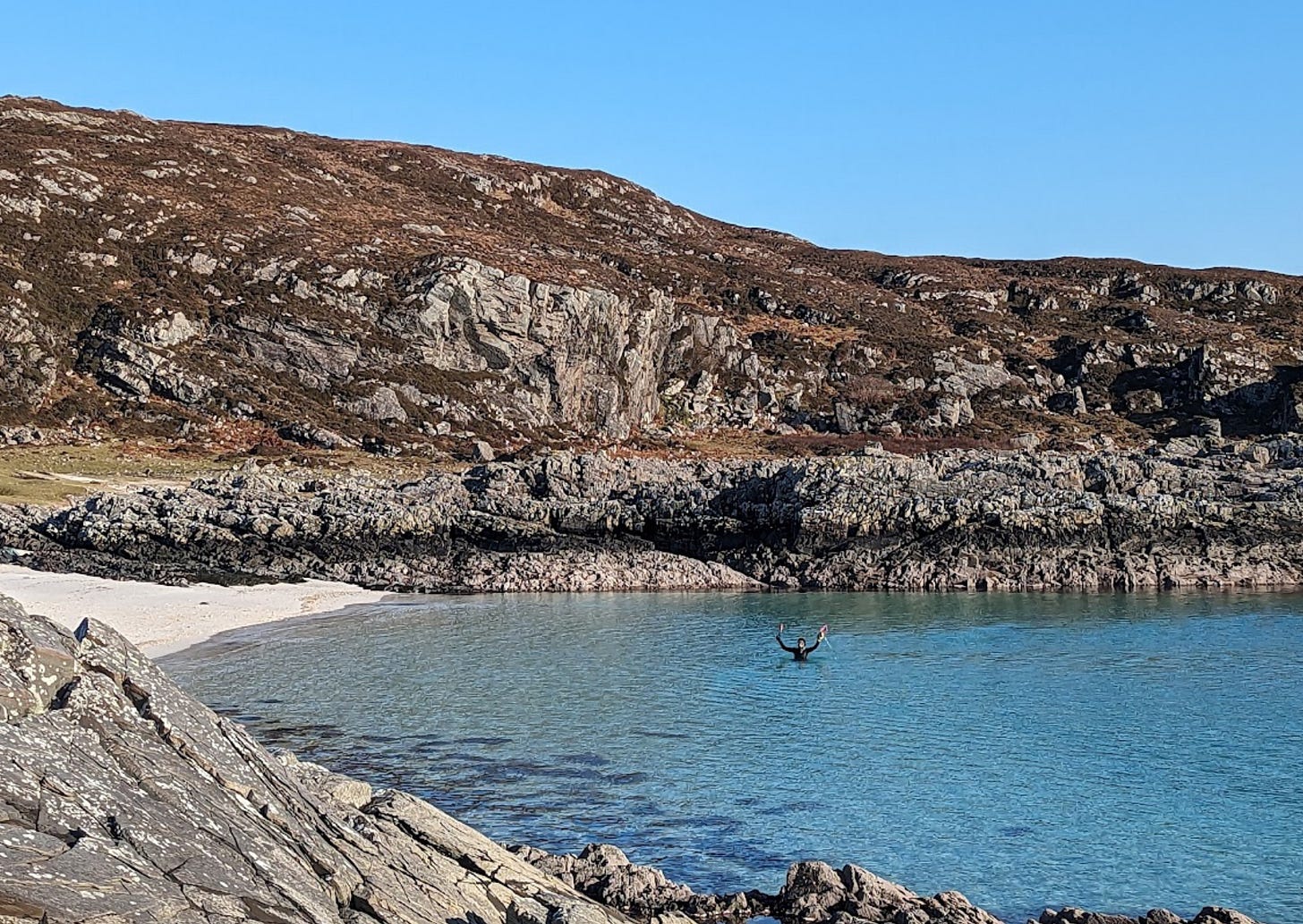
The dizzying breathlessness you get after going up and down a couple of times is exhilarating either way; diving in this manner is also an exercise in bodily awareness. Can I feel my hands; my feet; does my chest feel tight? Should I have a rest before my next dive? Can I feel a current beneath me? When is the tide turning? Can I still see my buddy/shore spotters? Your whole world shrinks, yet expands at the same time. You become the soup. You do not think about the time you drove into the ULEZ in Glasgow by accident in your ancient estate car and are liable for a £60 fine. Being in this new world is simultaneously peaceful and highly stimulating.
At risk of repeating last week’s reflections on sustainable protein sources, this is also another of the truly wild and brilliant ways to connect with your food. Scallops don’t have a central nervous system - this isn’t to say they don’t feel pain - but preparing a scallop is an altogether different process than dismantling a deer. You insert your knife into the hinge (scallop, not deer), then run it along the flat edge to liberate the large abductor muscle - that’s the white bit - which then lets you open the shell. You then discard the line of eyes, and the intestine sac, also pulling out and discarding the small intestine tube that connects its guts to the muscle and roe.
The roe on a female scallop is a bright orange egg sac; on a male it is essentially a sperm-filled bollock, and is a pale, milky white. Scallop gonads of either persuasion are edible and delicious, despite those lovely preconceptions I just painted. I’ve always found it best to give your gutted scallies a good wash in the sea to get rid of any stray intestine grub or grit before cooking.
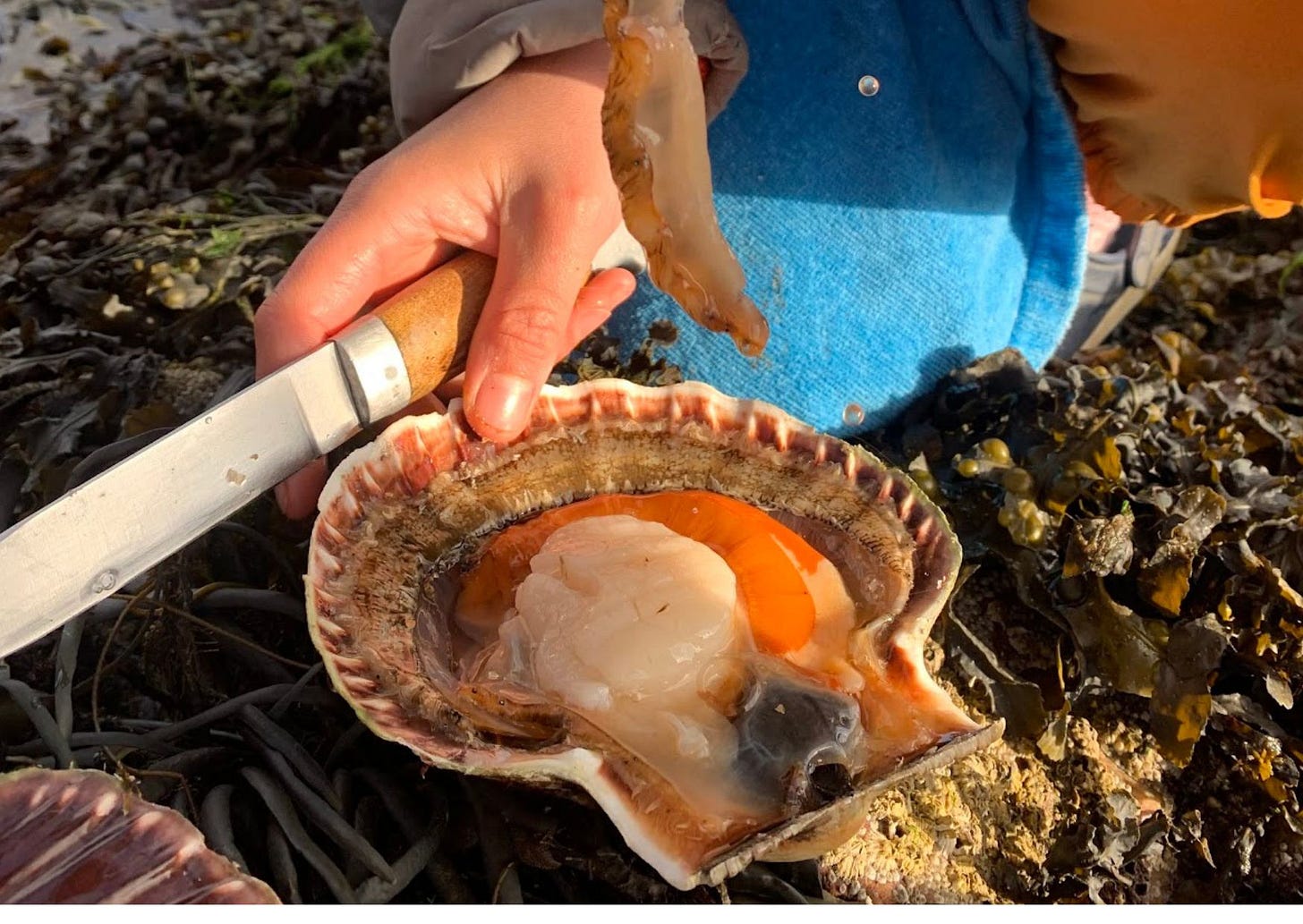
If I’ve got a fire going, then cooking the scallops in their shells with plenty of butter is the way forward. I tend not to salt them. If you’re bringing them back home, only open and gut them just before you cook them as they’re best as fresh as humanly possible. Again, butter is the way forward here, with perhaps a grinding of black pepper and either a splashette of white wine, or a deft spritz of lemon juice at the end. They need just 30 seconds to a minute on each side, depending on thickness. Bottom line, though: do not fuck about with them too much.
My kit list
Most of it - bar the wetsuit - is cheaper than getting into mountain biking or climbing, or indeed, ultra-marathons. Accessibility here, then is less cost-based, and far more knowledge, location and confidence dependent, which does make things harder. But, if you’re interested, I use the following kit to dive for scallops:
Wetsuit. Thick as balls if you’re going in Scotland. I finally relented and bought a 4/5/6mm Finisterre Yulex one on Vinted, at significant cost even second-hand. But it doesn’t half keep me warm, even in 7.8 degree water as it was this weekend just gone. Mine has a hood built in; you’ll need a hood either way for diving, even in warmer British waters. This is by far the most important and significant cost to consider.
Gloves - second-hand my 5mm ones from LOMO have just given up the chase and ripped at the thumb seam; I’ve actually found the 3mm decathlon pair that Lewis doesn’t wear to be a warmer and more dexterous replacement
Booties/wetsuit socks. I have a 5mm pair from TwoBareFeet, a birthday present a few years ago from Lewis.
Fins. Mine are a £18 pair from Decathlon, but I’ve just ordered a scuba pair for extra power on Vinted. Someone take my phone away from me.
Mask & snorkel. Also Decathlon. I don’t actually dive any deeper than 10m usually, and the mask is just fine. I think I paid around £15 for both.
Weights. I could only bring myself to pay for 2kg, as these, being heavy and made of metal, are not cheap. I would like to get to 4kg, because I’d be able to stay down for longer. If you want to get much deeper than 2-3 meters, you’ll need weights. All your other kit, and your lungs, hold a significant amount of air, which you don’t want to be fighting against to get down, or you’ll reach your anaerobic threshold in no time.
Belt for weights.
Scallop bag. I use the storage bag from an old microfibre towel. Mesh grocery bags, vegetable keepers, or anything with small holes in it will do.
Safety
I am a very strong swimmer with a good level of fitness, but guess what? I’m nowhere near as strong as 4 knots of tide flowing through the bottleneck of a small channel. Nor am I faster than a seal, which I avoid as much as possible as a bite from one of those things will land you in hospital due to the quite frankly magnificent amount of bacteria contained in their mouths. I’ll only enter the sea alone if I know someone has eyes on me from the shore at all points, or I have a pal with me. I also avoid places with any motorised or sail-based marine traffic. Life’s short enough as it is, and the moment something doesn’t feel right, I’m out of there.
The end.
Thank you, again, for getting to the end. If you happen to know any Scallop Experts out there, please send this to them and I’d love to fix any inaccuracies. Very much hope you enjoyed this longish read; it could have been double the length with just how enthusiastic I am about all this, but I’ve got the buzz back, so there will be more tae come.
*Wetsuit Osprey, not the backpacking brand. This cost £100 new, but fell apart within the first year of ownership, and despite my attempts to mend with black witch, dental floss, zip ties, and hope, is now relegated to a kayaking or “messing about down a rocky river” wetsuit only. My new one, at full price, is more than four times as expensive.
** a note on Rs and months. There is a sort of unofficial rule that you don’t eat shellfish, especially bivalves, in the summer, which is for a number of reasons. The first of which is that warmer waters are more likely to have toxins or algal blooms, which also develop more rapidly in the summer. However, I’m happy to risk this in the crystal clear, frankly icy waters of the Scottish west coast. The other reason for avoiding shellfish in the summer is that it’s spawning season, so they don’t quite taste as good, plus leaving them allows them to spawn and make more scallops. However, at the quantity I’m harvesting them (1-4 scallops every 3 months) I’m also going to go ahead and say that this is still pretty sustainable. And they still taste phenomenal, even in June. If a scallop expert would like to talk me out of this, I’m all ears.




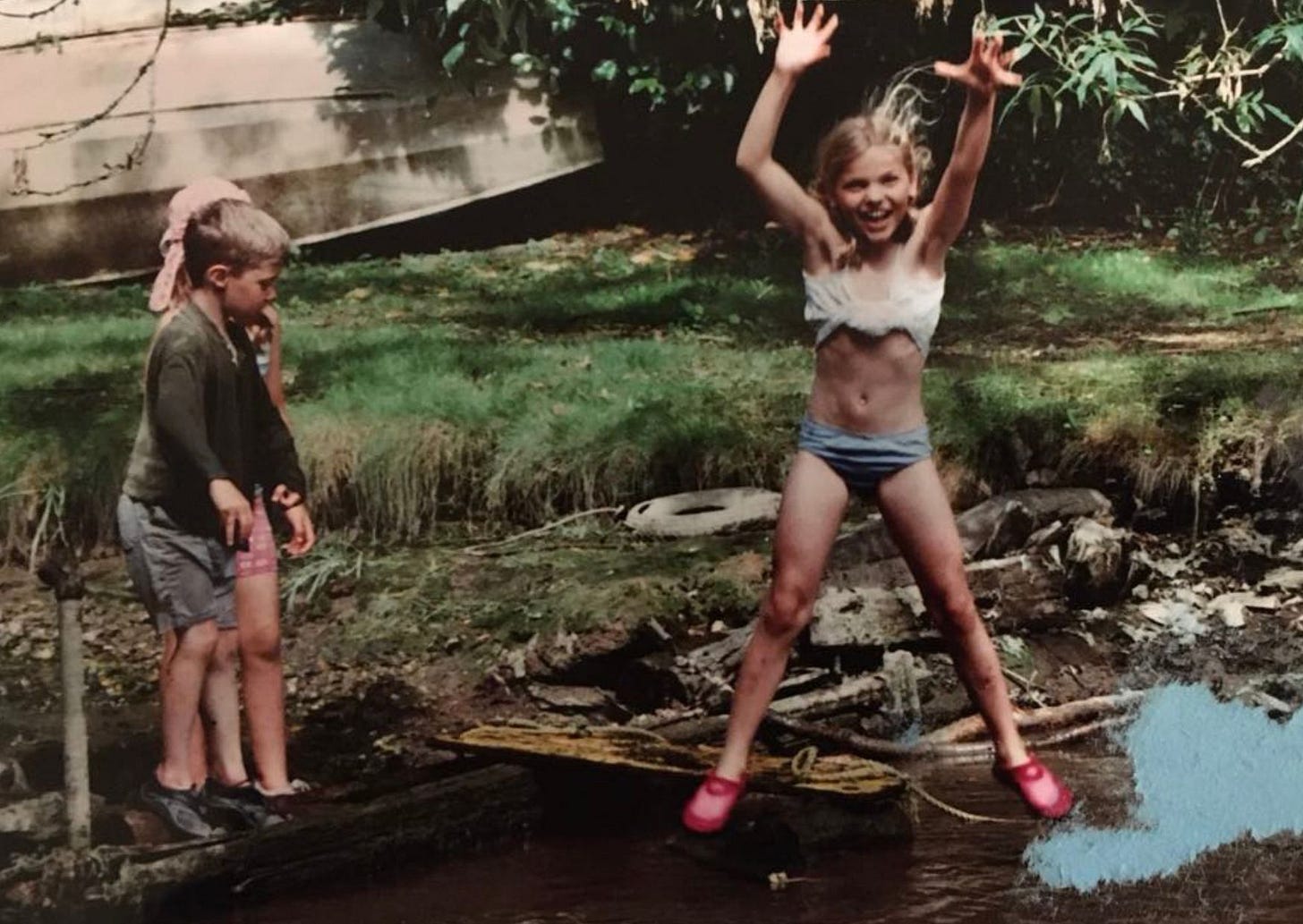
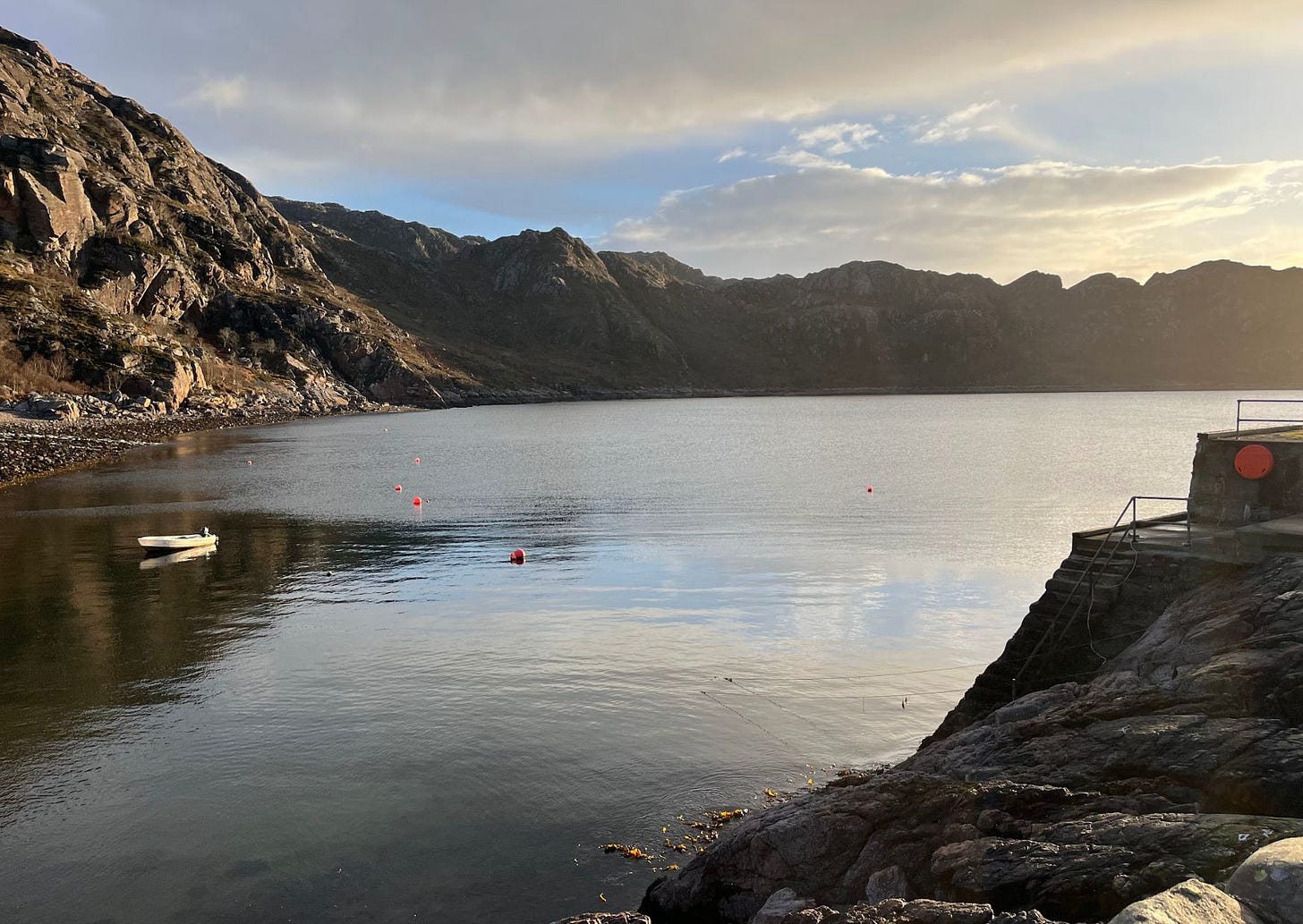
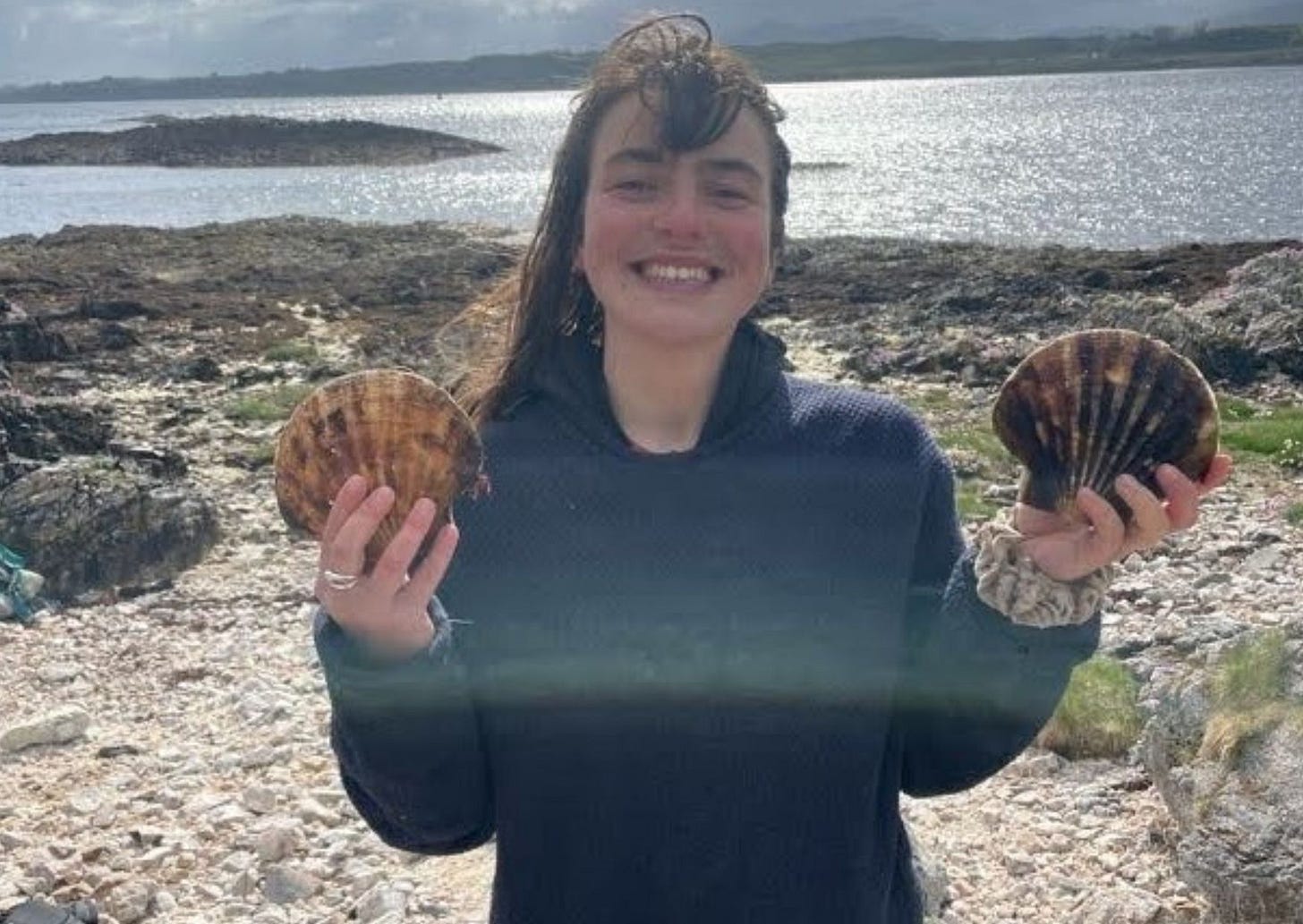
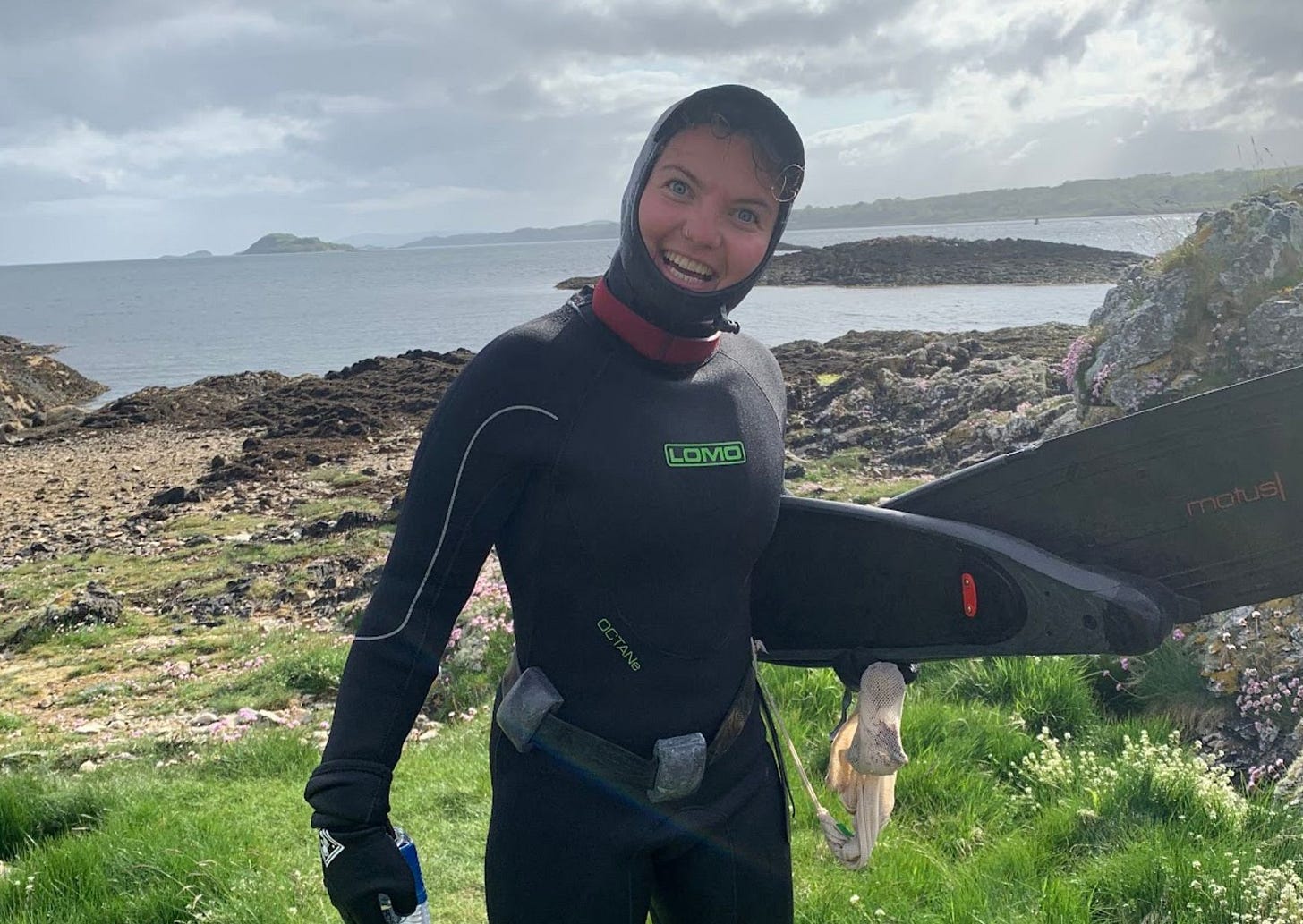
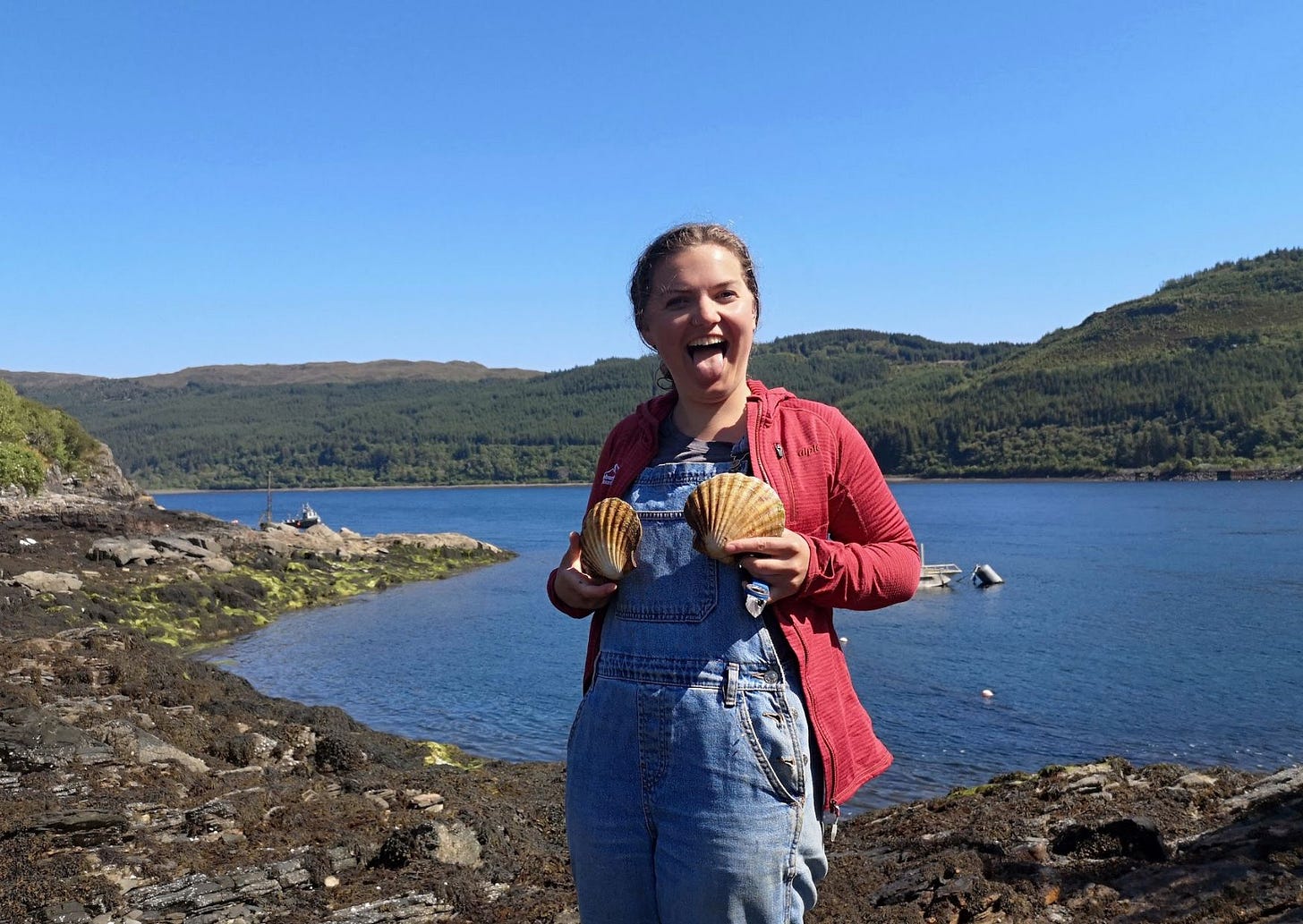
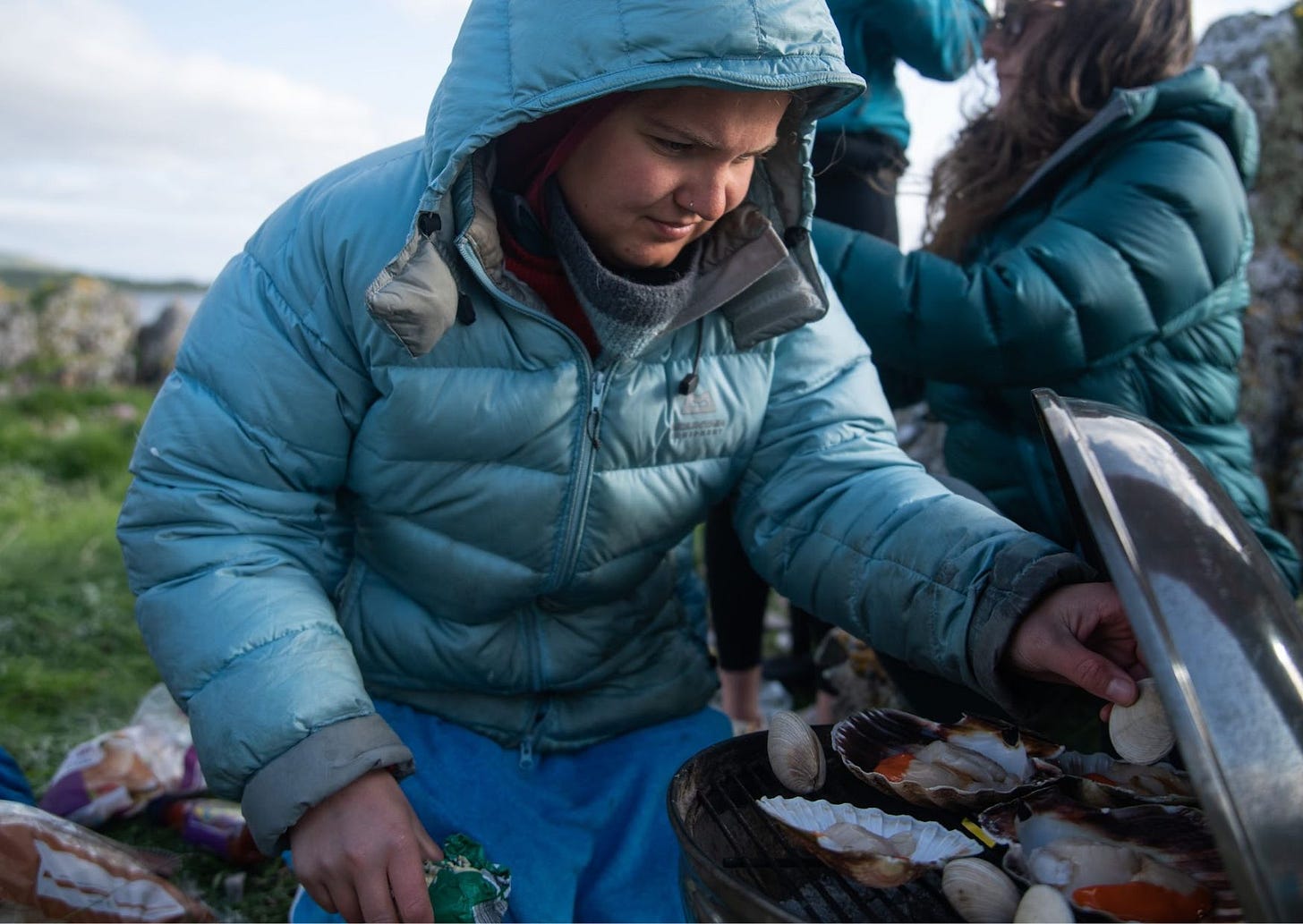
Well I now know a hell of a lot more about scallop diving than I did before - thank you! Would love to give this a go some day. The most interesting scallop experience I've had to date was having queenies on the Isle of Man - on a pizza, and also deep-fried from a chippie. Delicious, but not quite the same as cooking ones you've just caught over a fire on the beach!
Wow, they look delicious. As always you take us with you, we feel the cold and joy. Have a great weekend.